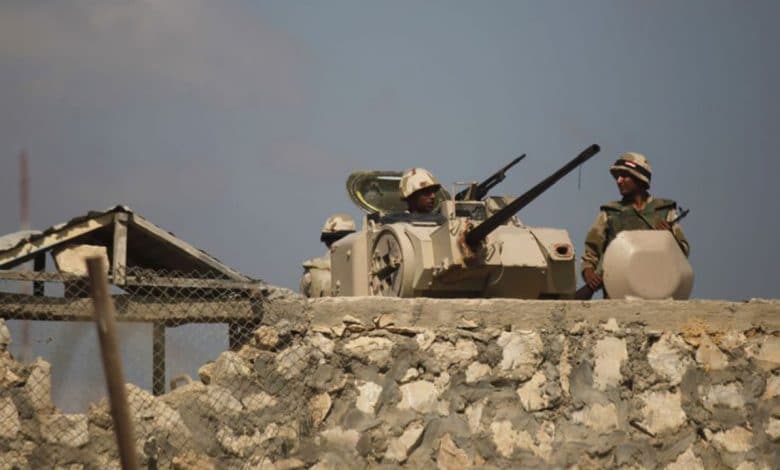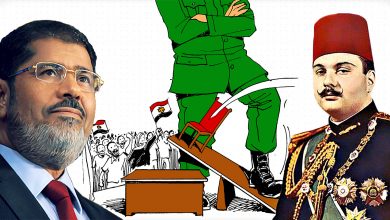
Military Situation in Sinai & Successive Casualties – Feb.
During February 2020, operatives of IS local affiliate, Sinai Province, in North Sinai launched a number of attacks against the Egyptian army checkpoints located in the eastern strategic range, killing a number of soldiers and officers.
It is noteworthy that Lieutenant General Mohamed Farid Hegazy, Chief of Staff of the Armed Forces, visited Sinai on Thursday, 6 February 2020, and inspected a number of security ambushes and checkpoints on the main roads and axes in North Sinai. Such visits from senior military officers are usually aimed at sending a message to the public opinion that everything is under control, which is not true.
According to Mada Masr, citing a security official, the attacks were launched simultaneously on the Zilzal series of checkpoints located near the village of Gawra, south of the city of Sheikh Zuwayed. However, the main attack targeted the Zilzal-15 checkpoint where a fierce firefight broke out before the militants succeeded in storming the checkpoint. All seven soldiers killed were stationed at Zilzal 15 and included the captain who commanded the checkpoint, two officers, and a first lieutenant, the source said.
On Sunday, 9 February 2020, military spokesperson Tamer al-Refaei announced that the Egyptian Armed Forces foiled an attack, killing 10 militants and destroying a four-wheel drive vehicle. However, according to the military spokesperson, the fire exchange resulted in seven casualties, two officers and five soldiers. Refaei added that the security forces combed the area and chased the militants.
On 11 February, Brigadier Mostafa Abido, commander of the 134th Brigade Mechanic infantry of the 18th Division of the Second Egyptian Army was killed in a bombing that targeted his car on the international road, east of Bir al-Abd, North Sinai
Although the strategy of erecting security checkpoints in cities is a strategy followed by all security services, yet, they must meet some controls and conditions which vary according to the nature of cities.
The form and way of deployment and communication methods for checkpoints in cities that do not have major security problems or face major threats are completely different from other cities that are subject to turbulent security conditions, especially with respect to linking the checkpoints to each other with communication devices and roads designed to connect these ambushes so that they can cooperate and provide support to each other as soon as possible to thwart any attacks, in addition to stationing other support forces in close proximity to provide help at emergencies. Also, members of checkpoints must be properly armed, and their number should be commensurate with the nature and size of militants in those areas, which is known to all security services, but unfortunately missing in Sinai.
The North Sinai governorate has witnessed, since 2013, intense confrontations between the army and security forces and militant groups. Sometimes, militants were able to carry out deadly attacks against ambushes and checkpoints; and in most cases, the army and security forces stationed at these checkpoints were completely destroyed, such as what happened to Karm el-Qawadees checkpoint, that left 31 troops dead, as well as dozens of other attacks, which raises several questions, including:
1- How a few hundreds of militants can inflict those casualties on the Egyptian army and security forces, amid Sisi’s keenness on buying weapons, where Egypt has become the largest importer of arms in the continent and has recently ranked third globally with a share of 5.8% of global major arms imports.
2- What about the training of the Egyptian army and security forces, including the elite units on which the clashes in Sinai mainly rely? I think that it is time for the current regime to stand and evaluate the training of army and police personnel, especially that some international reports say that the training of the Egyptian army combatants is weak.
3- Most attacks on security checkpoints, as newspapers and websites report, take more than ten minutes! So why did the support forces not move for help? Why do they always arrive either too late or a long time after attacks?
4- What did the unified command of the area east of the canal do since it was formed in 2015? Why did they fail to stop militant attacks in Sinai?
5 – The comprehensive Operation Sinai-2019 gave only three months to cleanse Sinai of terrorism, but it has failed up till now, amid escalating militant attacks, leaving major casualties among the military and security forces.
6- What is the fate of the Chief of Staff, Lt. Gen. Mohamed Farid Hegazy, who was given the three months deadline to empty Sinai of terrorism, after his failure to achieve this! Does this not indicate failure of the security strategy adopted?
7- It is time for the security strategy in Sinai to change after assessment of what is actually going on the ground in Sinai, amid the unfair displacement, eviction and killing of the people of Sinai! Is the events in Sinai are deliberately intended by the regime? Is the current security situation in Sinai connected to the deal of the century?
8- That security strategy pursued in Sinai has not achieved any successes in combating the insurgency there. On the contrary, the casualties among the army forces have been multiplied, amid killing hundreds of competent officers such as Ahmed Mansi, Rami Hassanein, Khaled Maghrabi and many others.
To Read Text in PDF Format Click here.



